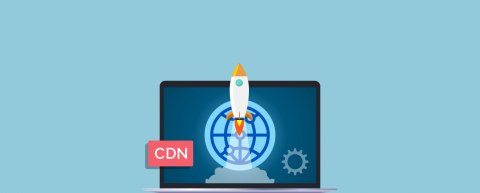Security | Threat Detection | Cyberattacks | DevSecOps | Compliance
Latest Posts
How to Boost Cybersecurity in Fintech and Banking?
Globally, fintech firms saw 2.5 times more attacks in Q1 2022. The BFSI industry is prone to cyberattacks every day. Fintech firms carry some vital data. Cybercriminals know it. They aim to exploit your system’s flaw to access the data. The worst part is they will use it for financial fraud. A successful data breach causes penalties and reputation losses. It scares away your customers. It is even motivating cybersecurity in Fintech. How do you make a secure financial platform?
How to Choose the Best CDN Service for Your Startup?
47% of customers prefer web pages that load within 2 seconds. Not only do they expect, but 40% of visitors will also leave your site if it takes more than 3 seconds to load. This makes using the right Content Delivery Network more critical for your startup. It helps to achieve quick and secure content delivery. In the market for a CDN Service? Check out these factors before choosing your CDN service provider.
Bad Bots Level Up - How to Protect Your Website from Costly Hacks?
Do you know bot attacks are turning from bad to worse? Legacy defenses are showing their age. We gear up for this year’s cybersecurity awareness month with the new challenger – sophisticated bad bots.
How to Use MITRE ATT&CK to Mitigate API & Other Attacks?
With a threat landscape expanding at an accelerated pace, it is next to impossible for any organization to even keep track of and monitor the volume, frequency, complexity, and breadth of the attack techniques and tactics out there. But to effectively tackle threats and protect mission-critical assets, the knowledge of these common attack techniques, tactics, detection, and mitigation is critical. This is where MITRE ATT&CK is especially useful.
DDoS Attack Cost Bandwidth.com Nearly $12 Million- How to Protect Your Site Against One?
Recent years have witnessed a sharp surge in DDoS attacks, and the cost of attack is also steadily increasing. SMEs spend, on average, $120k per attack. As more and more businesses move to the cloud, it is essential to be aware of the risks associated with DDoS attacks. The cost of DDoS attacks can affect your company’s bottom line as it can shut down its infrastructure, applications, communications, and other vital services.
5 Tips to Stay Ahead of OpenSSL Vulnerabilities
Newer OpenSSL vulnerabilities are identified regularly by genuine security researchers or come to light as zero-day vulnerabilities when exploited by threat actors. While patching the bugs and OpenSSL vulnerabilities are important, organizations cannot wait for and rely just on patches to protect their websites. They need to be proactive in identifying and securing these vulnerabilities before attackers can find and exploit them.
Hackers Tampering with QR Codes To Steal Money - FBI Warns!!
From making contactless payments on mobile payment apps and viewing paperless menus to contact tracing Covid-19 cases, QR (Quick Response) codes are everywhere and in popular usage. This ubiquity and convenience have also made QR codes popular and lucrative targets for cybercriminals who leverage malicious QR codes to illegally gain access to confidential information, spread malware, or steal money.
Can Penetrating Testing Help Secure Your Business?
Hundreds of thousands of websites and applications are targeted and attacked every day. SANS institute finds that 60% of cyber attacks have targeted web apps. Most web applications have urgent and critical vulnerabilities. Automatic vulnerability scanners are geared toward evaluating the security posture of the organization. Do you think your automatic scanner alone can cover all aspects of security assessment?
CDN Security - How Does It Help with Website Security?
Cyberattacks have become more sophisticated, and they have the potential to cause severe disruption to service availability and financial loss to businesses. According to Gartner, IT downtime costs businesses $5,600 p/minute on average. For every business with an online presence, being able to serve user requests and deliver content in a secure, reliable, and speedy manner is critical. This is where content delivery networks (CDNs) come in.











